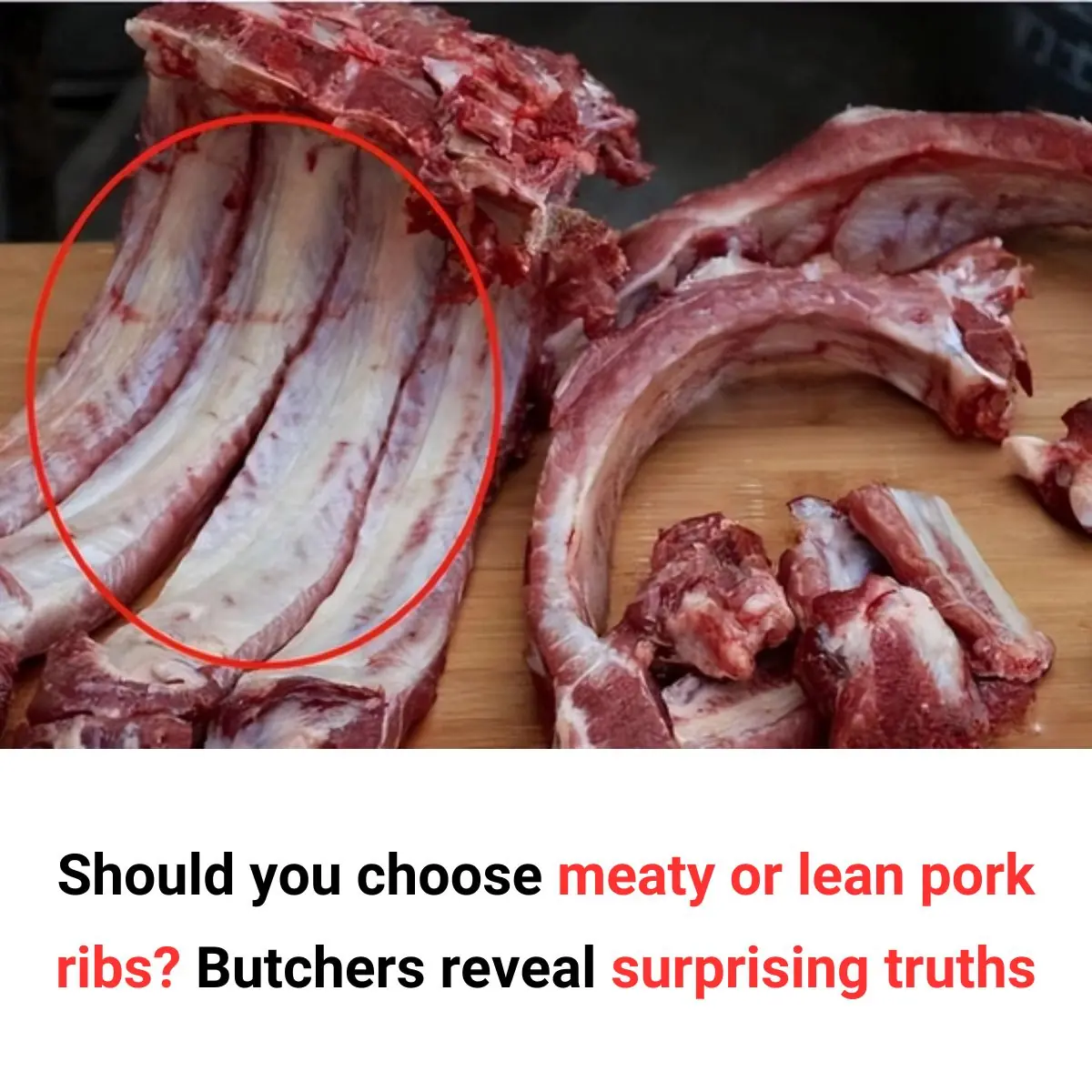Should You Choose Meaty or Lean Pork Ribs? Butchers Reveal Surprising Truths
Many people buy pork ribs based on preference or at random. However, selecting fresh, high-quality ribs requires knowing a few key points.

Pork ribs are a staple in many family meals, offering a versatile ingredient for various dishes. Not only are they delicious, but they also provide high-quality protein, calcium, and essential nutrients. However, when shopping for ribs, many wonder: should they choose meaty or lean ribs? Let’s explore insights from butchers to make the best choice.
Meaty vs. Lean Ribs: Which One Is Better?
Many believe that meaty ribs are superior since they offer more edible portions. However, this is not entirely true for several reasons:
- Meaty ribs are not always tender and flavorful: The meat closest to the bone tends to be more tender, flavorful, and retains moisture better than thick, lean meat. Too much meat can result in a drier and tougher texture when cooked.
- Fat-to-lean ratio matters: A balanced amount of fat enhances the tenderness and juiciness of ribs. If the ribs are overly lean, the dish may end up less tasty.
- Butchers balance the amount of meat on ribs: If ribs have excessive meat, cuts like pork belly or shoulder may become too lean and harder to sell. To maintain product balance, butchers typically leave a moderate amount of meat on ribs.
How to Choose the Best Ribs
The ideal ribs should have a moderate amount of meat—not too much, but not too little—to ensure a good texture when cooked. More meat doesn’t always mean better taste. Additionally, the type of ribs you choose should match your intended dish:
- Baby back ribs (small bones, tender meat): Best for soups, braising, or steaming.
- Loin ribs (flat bones, more meat): Ideal for grilling or frying.
- Spare ribs (less meat, more bone): Perfect for making broths and stocks.
Key Tips for Selecting Fresh Ribs
In addition to choosing the right cut, it’s crucial to check for freshness. Butchers recommend looking for the following:
1. Color
Fresh ribs should have a light pink or bright red hue with white fat. Avoid ribs with a dark, dull, or pale appearance, as they may be old or chemically treated. Yellowish fat or unusual spots indicate oxidation, meaning the meat is no longer fresh.
2. Smell
Fresh ribs have a natural meaty aroma without any sour or foul odor. If the ribs smell off, sour, or unusual, they may be spoiled or treated with preservatives. A slight metallic scent is normal, but a strong, unpleasant smell is a warning sign.
3. Texture and Elasticity
Press the meat gently—if it bounces back quickly, it’s fresh. If it stays dented or feels mushy, it has likely been stored too long or improperly frozen. The meat should also feel firm and well-connected to the bone.
4. Surface and Moisture
Good-quality ribs should have a dry, non-sticky surface. Avoid ribs that feel slimy or overly wet, as these may be contaminated with bacteria. A slick or unnaturally smooth surface may indicate soaking in water or chemicals to increase weight.
By keeping these factors in mind, you can confidently choose the best pork ribs for your meals!



